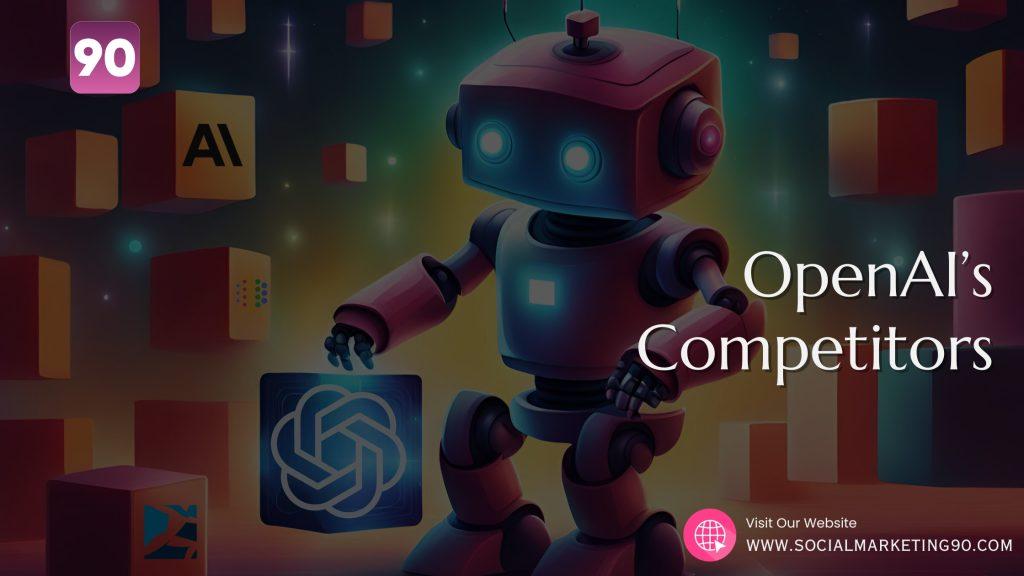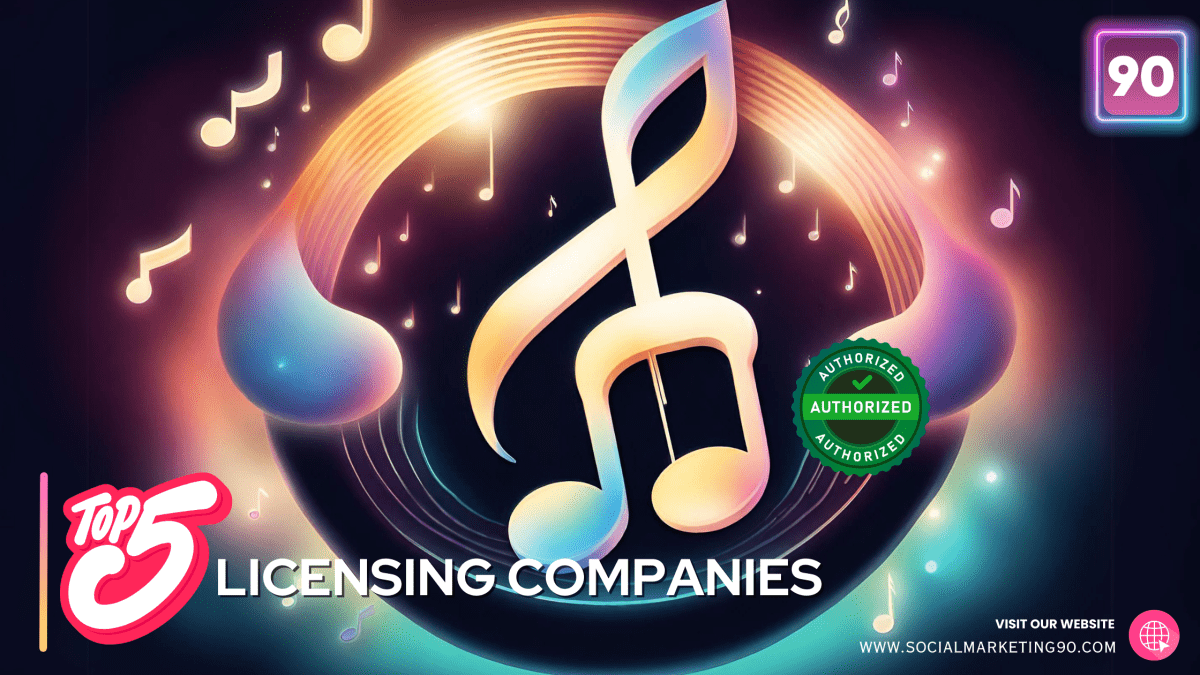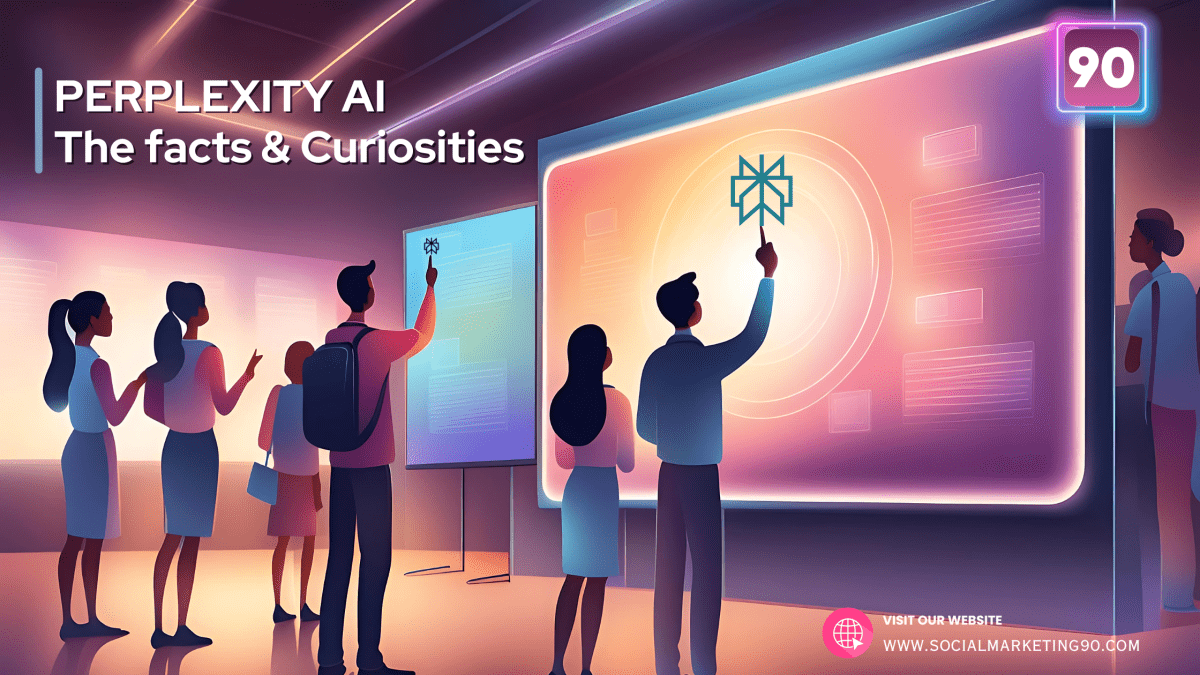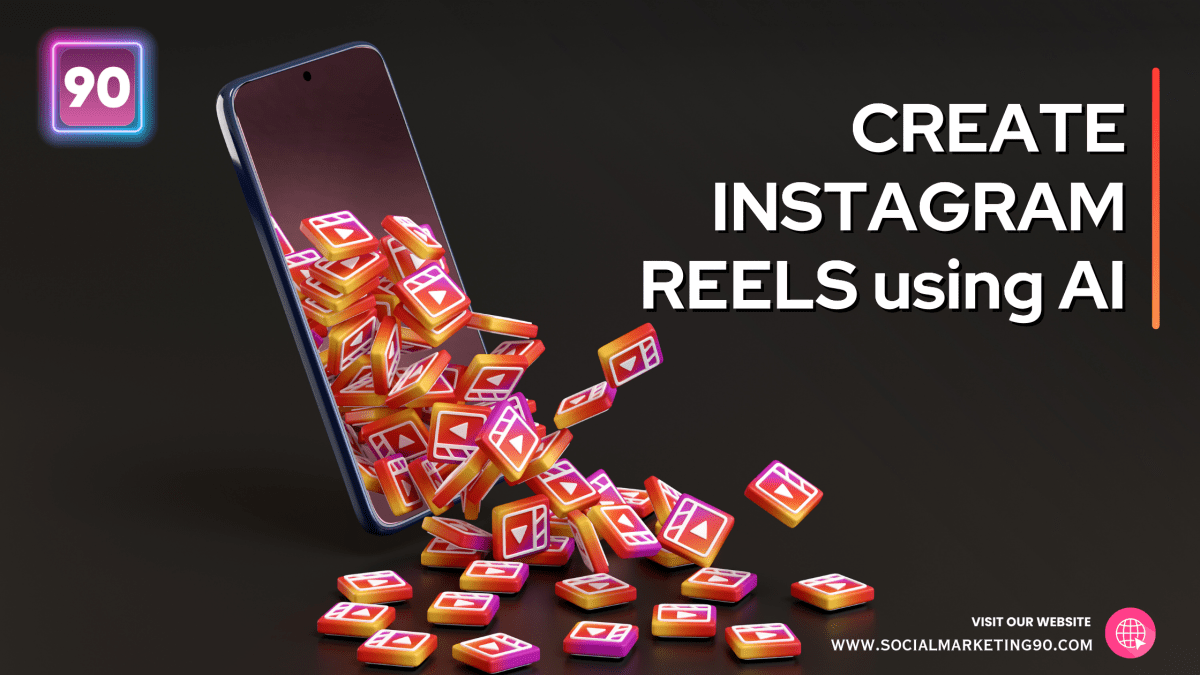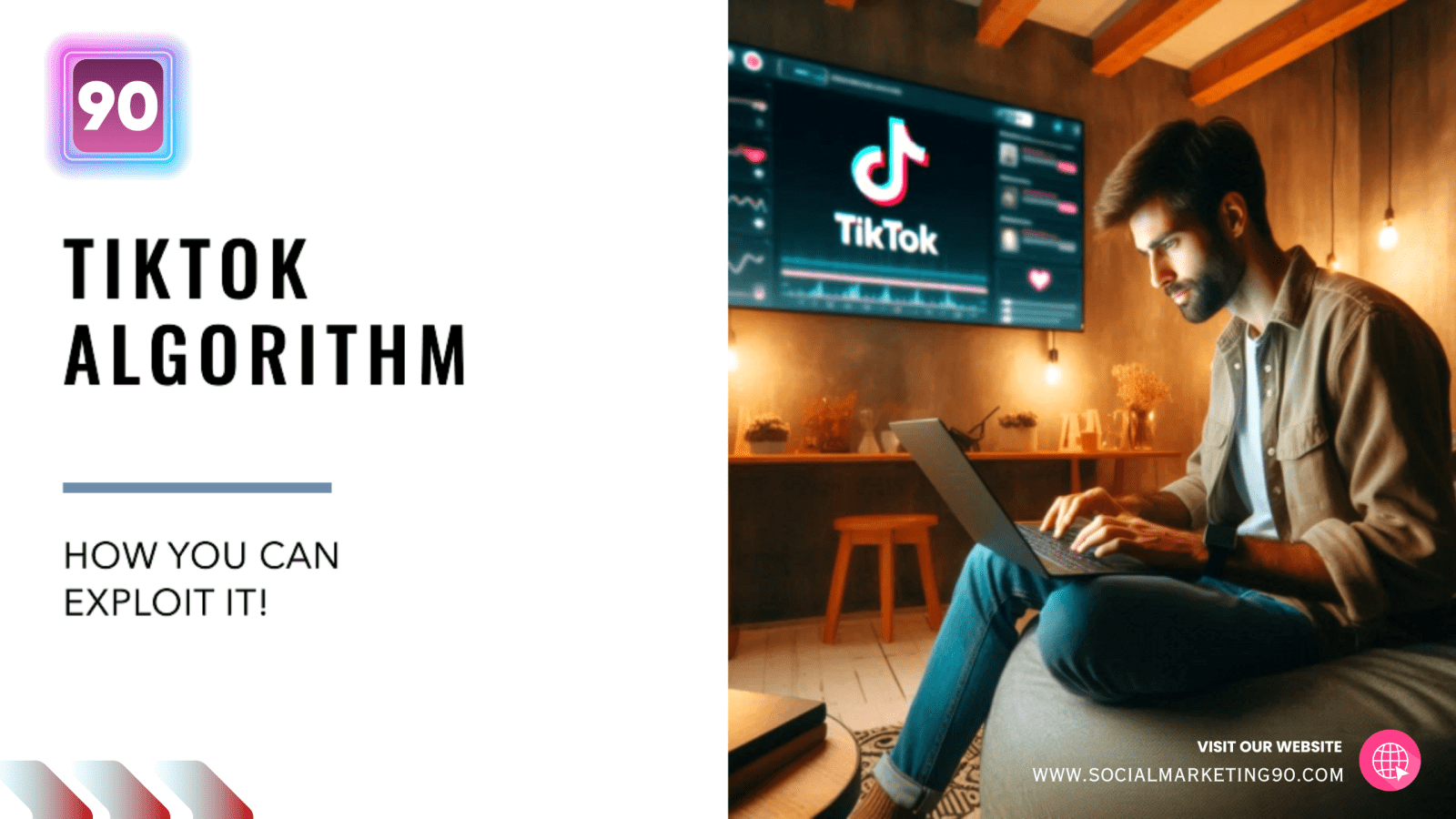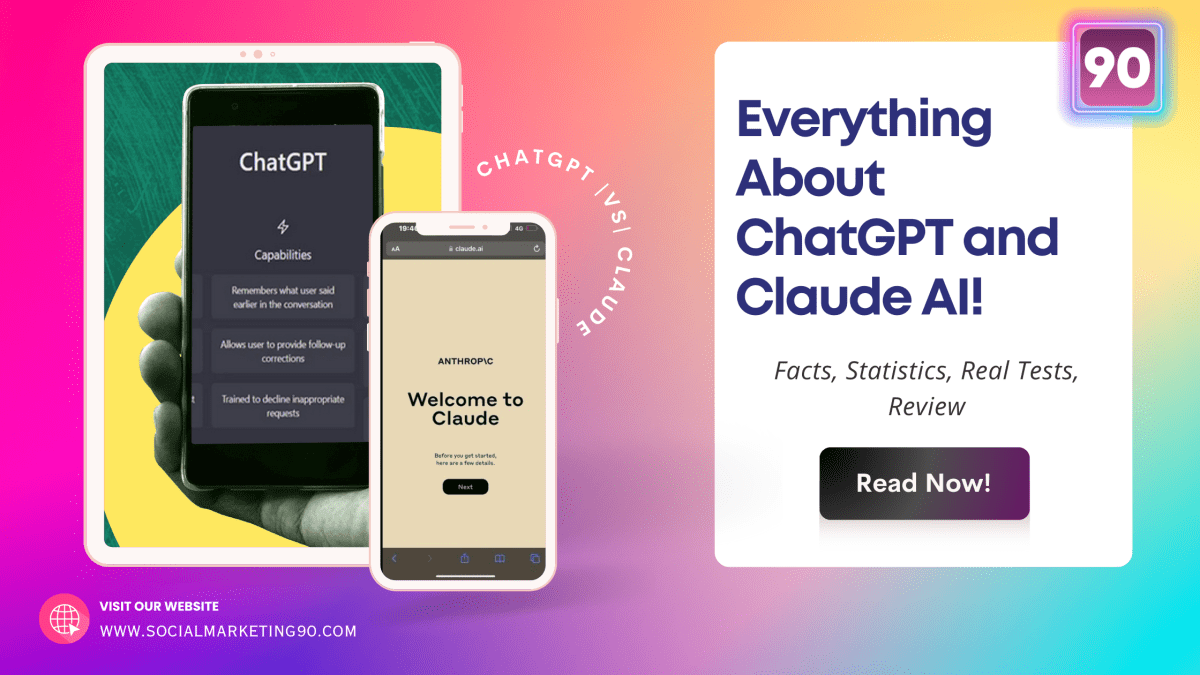Remember that time you read a really beautiful poem, and you couldn’t believe a computer wrote it? Or how about that news story where AI helped doctors figure out diseases super accurately?
That’s the amazing world of artificial intelligence (AI), and OpenAI has been like the superhero of the story. But you know how even superheroes can face tough times?
Well, OpenAI might be feeling a bit of that uncertainty now. People are starting to talk about competitors of OpenAI, and it makes us wonder: Is OpenAI still the best of AI leadership, or is it getting a bit shaky?
OpenAI, known for super-smart AI, has been number one for a long time. But things are changing. Now, there are many old competitors of OpenAI and new players in the game with big ideas and even bigger goals.
It’s not just OpenAI running the show anymore. Let’s dig into who these competitors are and figure out if OpenAI is still the best of the AI world or if it is no longer the best.
Let’s go on a journey through the story of AI! We’ll see how it went from cool ideas to being a part of our everyday world.
To understand this better, let’s go back in time and see how this AI thing began.
History Of AI (Artificial Intelligence)
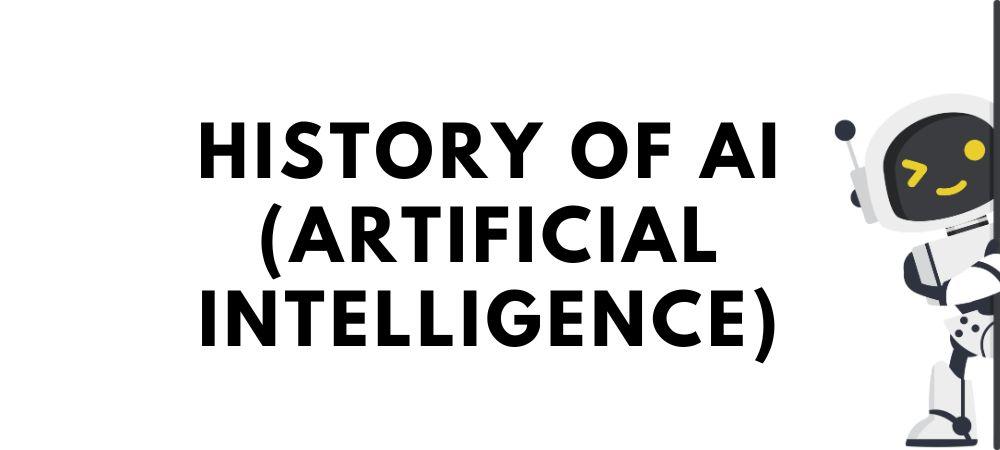
Artificial intelligence (AI) might feel like something straight out of a sci-fi movie, but its roots are actually quite old, stretching back decades! Let’s take a quick trip through the history of AI.
It’s All Started In 1940s – 1950s


Think about a world where machines could think and figure things out, just like us humans. Two scientists, Alan Turing (you might remember the movie about him, The Imitation Game – 2014) and John McCarthy, were chasing this dream in the 1940s and 1950s.
Turing wrote a super important paper called “Computing Machinery and Intelligence,” laying the groundwork for AI. McCarthy came up with the term AI in 1956.
In those early years, they made the first programs that could play chess, and the idea of “learning machines” was born.
Early Development Phase, 1960s – 1990s
The AI journey in the 1960s and 1970s had its ups and downs. It started in 1961 when the first industrial robot, Unimate, got to work at a General Motors plant in New Jersey. James Slagle developed SAINT, a smart program tackling tricky calculus problems.
Fast forward to 1965, Herbert Simon predicted that machines would match human work within twenty years, while Hubert Dreyfus countered, arguing that the mind wasn’t like a computer.
In the late ’60s and early ’70s, we saw groundbreaking advancements like the development of MYCIN, an expert system for identifying bacteria, and the Stanford Cart, an early autonomous vehicle.
The ’80s brought the birth of the Fifth Generation Computer Project in Japan, aiming for computers that could chat, translate languages, interpret pictures, and reason like humans.
As the years progressed, we witnessed the rise of driverless cars, the advent of backpropagation in neural networks, and the legendary Deep Blue defeating a world chess champion in 1997. These years laid the foundation for the AI we know today.
The 2000s to 2020s Development
In the early 2000s, AI had a fresh start. After slowing down in the 80s and 90s, three big things helped AI get back on its feet:
- Internet Boost: The internet became a massive library of data, like giving a hungry student tons of books to learn from.
- Super-Fast Computers: New powerful chips made computers work lightning-fast, like a super-quick calculator handling millions of numbers at once.
- Smart Learning: Instead of telling the computer every step, researchers taught it to learn from data and get better on its own, like a robot improving at walking with practice.
These changes brought big improvements
- Clever Robots: Robots got better at moving around and even doing surgery.
- Talking Computers: Natural Language Processing (NLP), computers started understanding and responding to human language in more natural ways, like chatbots and voice assistants.
- Smart Eyes: Machines could spot objects and faces in pictures and videos really well now.
By 2020, AI wasn’t just a new technology; it was part of our everyday lives. It helped us pick movies and predict traffic. The groundwork in the 2000s made AI grow even faster, bringing us the cool stuff we see today!
Now AI is Everywhere
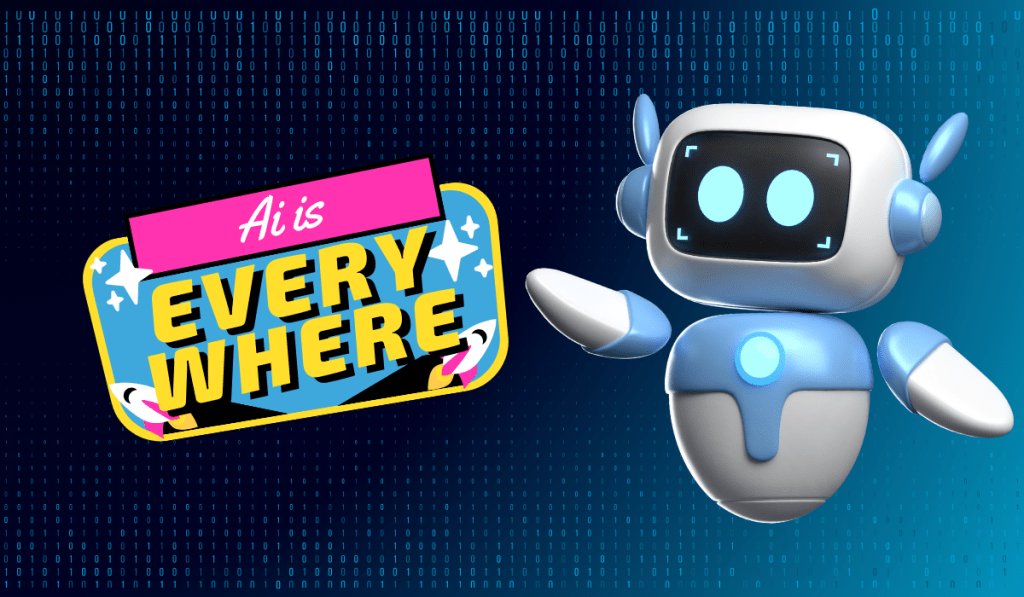
Fast forward to today, and AI is all around us, like a friendly helper in our daily lives. Let’s see how and where AI touches our daily lives today.
- In Healthcare: AI is being very useful in the world of healthcare. It helps doctors find problems early. From reading scans to suggesting treatments, it’s become an essential part of keeping us healthy.
- In Finance: When it comes to finances, AI is like a financial expert. It analyzes numbers super-fast, helping us make smart choices and avoid the wrong investment. It’s like having a personal finance advisor..
- In Everyday Tech: Open up your phone, and you’ll find AI right there. It’s the brain behind voice assistants like Siri or Alexa, understanding what we say and making things happen.
- In Creative Spaces: AI is even getting creative! Think about music, art, and writing. It’s like having a robot buddy who can compose a tune, create stunning art, or even help write a cool story.
The 2000s set the stage, and now AI is rocking our world. The journey continues, and who knows where our AI adventure will take us next?
Inception of OpenAI
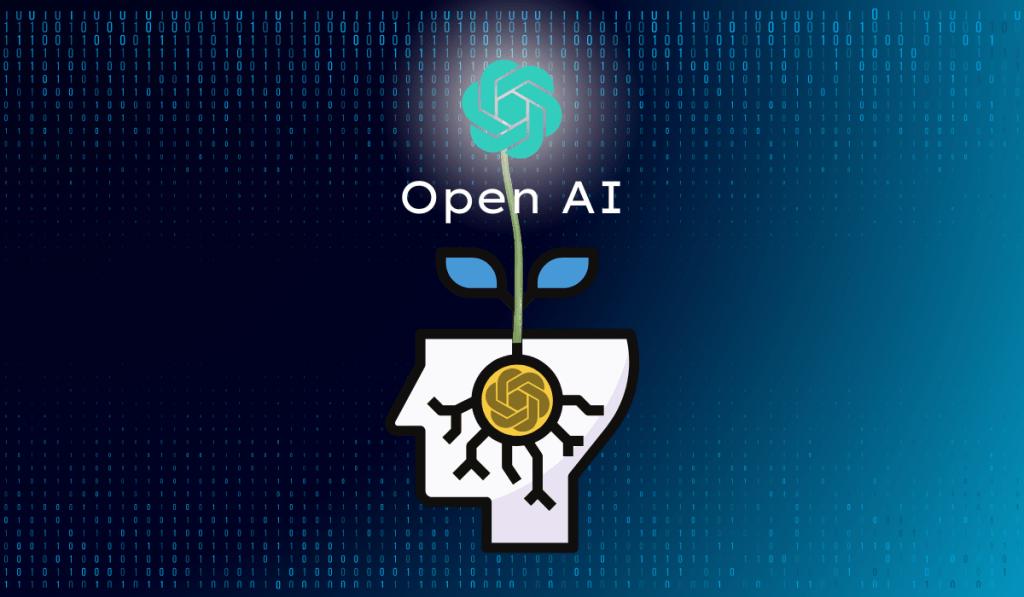
OpenAI entered the scene in 2015, during the AI growth of the 2010s. OpneAI was founded by a group of tech leaders with a bold vision: Elon Musk, Sam Altman, and along with other well-known individuals like Greg Brockman and Peter Thiel.
Their aim was to develop safe and beneficial artificial general intelligence (AGI) that would benefit humanity as a whole.
OpenAI received significant support from various sources, including:
- Financial backing: Initial funding came from a $1 billion endowment provided by the founders and other investors like Amazon Web Services and Infosys.
- Tech partnerships: Microsoft established a close collaboration with OpenAI, providing access to their powerful Azure cloud computing resources.
- Talent pool: OpenAI attracted top researchers and engineers from around the world, building a strong team to advance its mission.
With its ambitious goals, strong backing, and talented team, OpenAI quickly became a major player in the AI landscape, contributing to groundbreaking research and development in areas like language models, robotics, and safety research.
Importance Of OpenAI
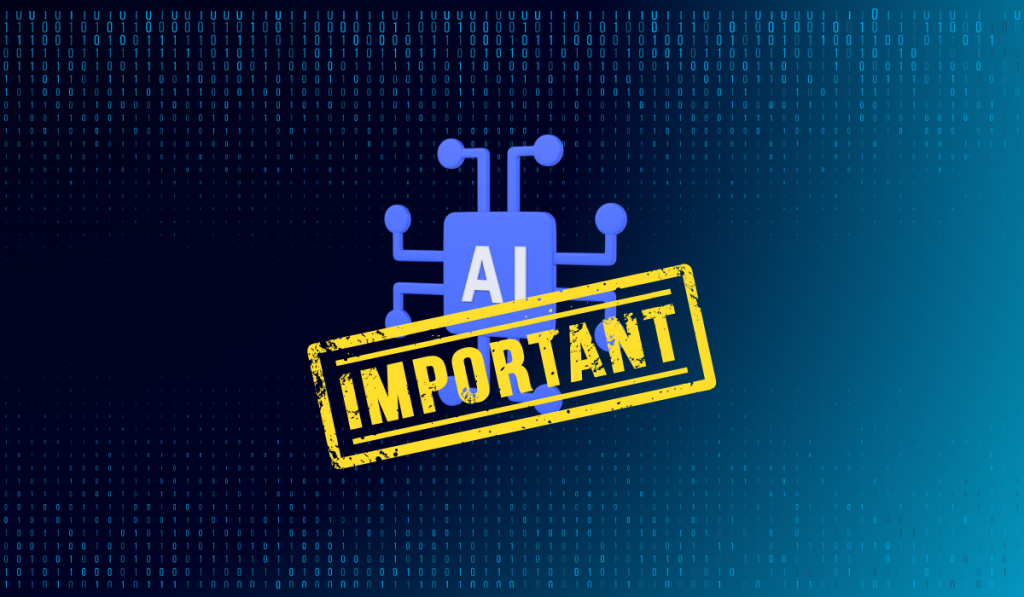
Founded in 2015 by Elon Musk, Sam Altman, and other influential figures, OpenAI has become a key player in the world of artificial intelligence. But why is OpenAI so important?
Here’s why,
Safe and Useful AI
OpenAI stands out by focusing on creating safe and beneficial artificial general intelligence (AGI) for humanity. This commitment sets a vital example for responsible AI development and builds trust in the field.
Innovative Research and Tools
- GPT-3: This language model does amazing things, like writing human-like text, translating languages, and creating various types of content.
- Codex: A tool that helps developers write code more efficiently, influencing the future of software development.
- Safety Research: OpenAI actively explores ways to make AI safe and ethical, addressing concerns about bias and misuse.
Open Collaboration and Transparency
OpenAI is different from many AI companies; they believe in sharing their research openly. This encourages collaboration and innovation within the broader AI community, promoting responsible development.
Challenging the Norms
OpenAI’s bold vision and big projects constantly push the limits of what AI can do. This challenges other players, encourages new ideas, and keeps AI advancing quickly.
Shaping AI’s Future
By prioritizing safety, ethics, and responsible development, OpenAI plays a crucial role in shaping AI’s future. Their work aims to ensure AI benefits everyone, creating a future where humans and machines work together for the greater good.
OpenAI is not just about amazing research and tools; it’s about being responsible and creating a positive future for AI. OpenAI makes sure that technology works for people, not against them, as AI continues to advance. It is a source of hope and a positive force in the world.
Products of OpenAI and Their Uses
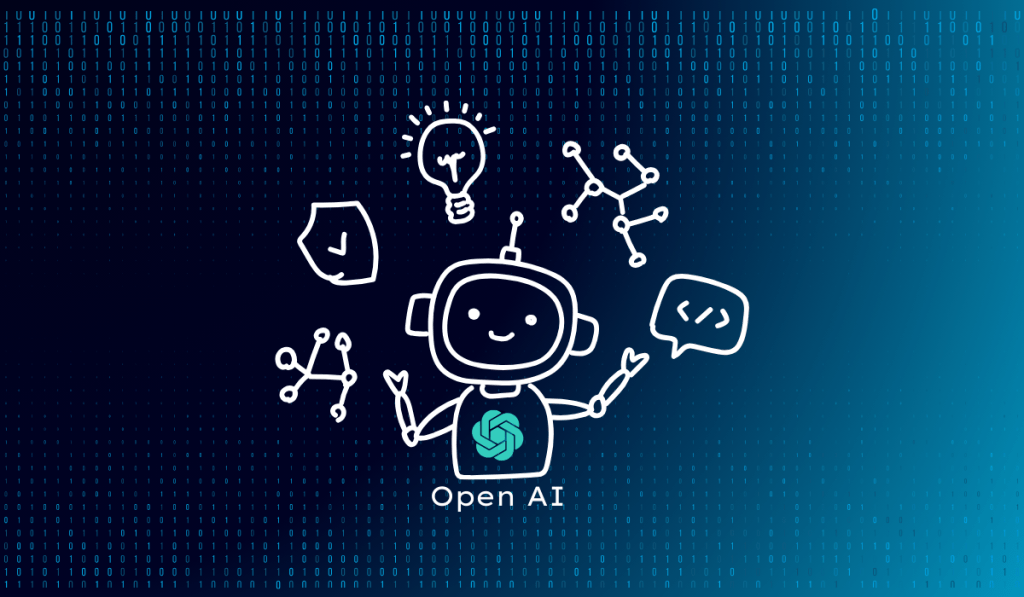
OpenAI has developed several impressive AI products, each with its own unique abilities and features.
Here’s a breakdown of OpenAI’s products and their key uses:
1. Generative Pre-trained Transformers (GPTs)
GPT-3
- Content Creation: Writing different kinds of creative content, including poems, code, scripts, musical pieces, emails, letters, etc.
- Language Translation: High-quality translations across various languages.
- Question Answering: Providing informative and comprehensive answers to your questions.
- API Integration: Developers can integrate GPT-3’s capabilities into their own applications like chatbots, virtual assistants, or writing tools.
GPT-4 (Still under development)
It is expected to further enhance GPT-3’s capabilities in text generation and understanding. In other words, it can handle various tasks with great accuracy and creativity.
2. Codex
- Software Development: Assisting developers with code generation, completion, and translation, ultimately speeding up and streamlining the software development process.
- Automatic Prototyping: Quickly generating code prototypes based on natural language descriptions.
- Learning Programming: Providing a more accessible and interactive way to learn programming through code suggestions and feedback.
3. ChatGPT
- Interactive Chatbot: Holding engaging and natural conversations on various topics, providing entertainment and exploration into AI interaction.
- Customer Service: Powering chatbot assistants for companies to handle customer inquiries and improve customer experience.
- Personal Assistant: Serving as a personal assistant, responding to requests, providing information, and offering suggestions.
4. Whisper
- Transcription and Translation: Accurately transcribing audio from various sources, including noisy environments and multiple speakers, with real-time translation capabilities.
- Meeting Recording and Analysis: Automatically transcribing and analyzing meeting recordings for efficiency and improved communication.
- Accessibility Tools: Providing real-time captions for individuals with hearing impairments or in environments with poor audio quality.
5. CLIP
- Image Recognition and Search: Accurately identifying objects and concepts in images, enabling efficient image search and classification.
- Image Captioning and Generation: Automatically generating descriptions for images or creating images based on text descriptions, enhancing image understanding and communication.
- Creative Applications: Providing creative tools for artists and designers to explore image manipulation and generation based on text prompts.
6. Jurassic-1 Jumbo
- Advanced Natural Language Processing: Used for natural language processing tasks like text summarization, sentiment analysis, and question answering, with potential for further research and development.
- Large Language Model Applications: Exploring applications in code generation, natural language understanding, and other areas requiring access to a massive dataset of text and code.
7. Gym Retro Atari & OpenAI Five
- Reinforcement Learning Research: These projects advance research in reinforcement learning, where AI learns through trial and error. They study AI’s ability to learn and adapt in complex environments like classic Atari games and competitive Dota 2 matches.
- Benchmarking and Evaluation: Providing standardized environments for testing and comparing different reinforcement learning algorithms contributes to the development of more efficient and effective AI agents.
Remember, this is not an entire list, and OpenAI is constantly pushing the boundaries of AI. Be sure to stay updated on their latest projects and research!
Let’s see the competition OpenAI faces in the AI world.
Competitors Of OpenAI
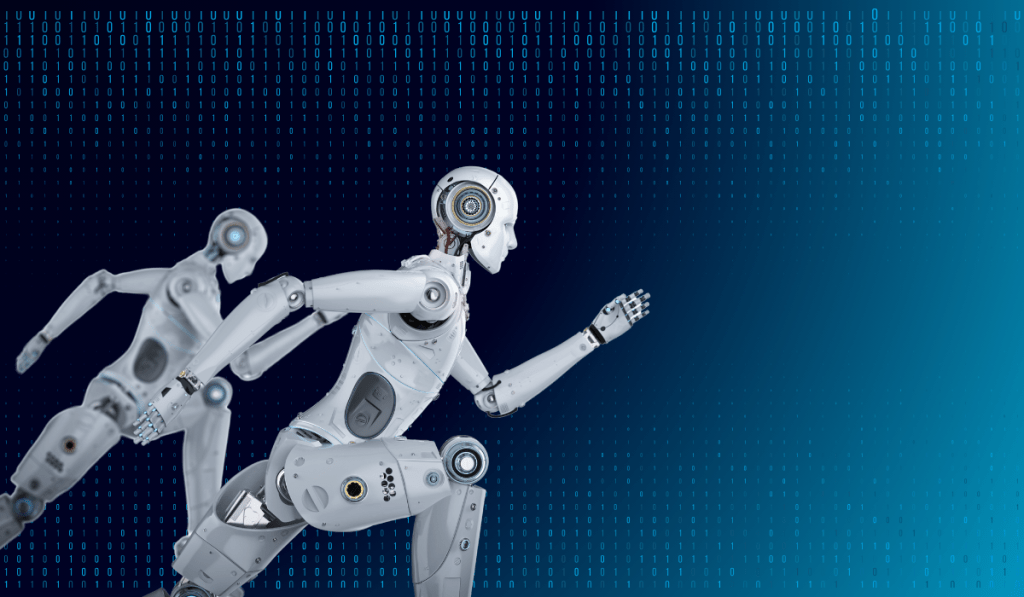
OpenAI competes in several areas of AI, so its main competitors vary depending on the specific focus.
Here’s a breakdown by sector
Large Language Models (LLMs)
- Anthropic: Founded by ex-OpenAI members, they focus on safer AI and developed Claude, a competitor to ChatGPT.
- Google AI: Their Pathways system and PaLM language model pose strong competition.
- DeepMind: Their Gato model aims for multitasking across modalities like language and vision.
- Nvidia Megatron-Turing NLG: Another powerful LLM with a focus on code generation.
- Honorable mentions: Hugging Face, AI21 Labs, Aleph Alpha, and many others are pushing the boundaries of LLMs.
Generative AI (Text & Images)
- DALL-E 2: OpenAI’s own image generation model has strong rivals like Midjourney and Stable Diffusion.
- Latent Diffusion models: OpenAI pioneered this technology, but others like Google Imagen and RunwayML are catching up.
- Imagen Video: Google’s AI video generation tool competes with OpenAI’s yet-to-be-released CLIP-ViT for creating videos from text descriptions.
AI Research & Safety
- DeepMind: A major competitor in general AI research with a strong focus on safety.
- AI21 Labs: Conducts research on various AI topics, including ethical considerations and language understanding.
- Future of Life Institute (FLI): A non-profit dedicated to safe and beneficial AI development.
General AI & Robotics
- DeepMind: Their Gato model aims for multimodality, encompassing vision, language, and robotics.
- Boston Dynamics: Leaders in advanced robotics with humanoid robots like Atlas.
- Tesla AI: Elon Musk’s company aims to integrate AI into self-driving cars and other autonomous systems.
Keep in mind that this list doesn’t cover everything, and AI is always changing. New players and cool technologies show up all the time, making it a lively and interesting field to keep up with.
Below is the comparison table to help you understand this better.
| Competitors | Area | Strengths | Weaknesses | Products | OpenAI | LLMs, Generative AI, Research, Safety | Pioneering research, strong models, focus on safety | Limited access to some models, less funding than some competitors | GPT-3, Dall-E 2, Copilot, Codex, Jukebox, ChatGPT |
|---|---|---|---|---|
| Anthropic | LLMs | Safety focus, Claude LLM | Newer player, limited resources | Claude (LLM) |
| DeepMind | LLMs, AI Research & Safety, General AI | Gato model, strong research focus | Less focus on specific applications | Gato (multimodal model), AlphaFold (protein structure prediction) |
| Google AI | LLMs, Generative AI | Pathways system, PaLM LLM, Imagen | Focus on internal research, less open access | Pathways (research platform), PaLM (LLM), Imagen (image generation) |
| Nvidia Megatron-Turing NLG | LLMs | Powerful LLM, focus on code generation | Limited public access, focus on specific task | Megatron-Turing NLG (LLM) |
| DALL-E 2 | Generative AI (Images) | Pioneering image generation, strong results | Limited access, ethical concerns | DALL-E 2 (image generation) |
| Midjourney, Stable Diffusion | Generative AI (Images) | Open-source, strong community | Less polished results compared to DALL-E 2 | Midjourney, Stable Diffusion (image generation) |
| Google Imagen Video | Generative AI (Video) | Promising technology, Google backing | Early stage, limited capabilities | Imagen Video (text-to-video generation) |
| Future of Life Institute (FLI) | AI Research & Safety | Focus on ethical considerations, advocacy | Non-profit, limited technical resources | N/A (non-product focused) |
| Boston Dynamics | General AI & Robotics | Advanced robots, impressive capabilities | Focus on specific applications, high cost | Atlas (humanoid robot), Spot (dog-like robot) |
| Tesla AI | General AI & Robotics | Real-world applications, Elon Musk's backing | Safety concerns, limited transparency | Autopilot/Full Self-Driving (autonomous driving), Dojo (AI training platform) |
It’s important to consider OpenAI’s strengths and weaknesses when comparing them to competitors.
While their focus on safety, ethics, and open collaboration sets them apart, other companies may excel in specific areas like hardware, software, or application focus.
Other Contenders
- X.ai: This AI-powered scheduling assistant automates email communication for meetings and appointments. Their focus on a specific task area showcases the potential of AI in streamlining everyday processes.
- Stability AI: This open-source AI company has developed tools like Stable Diffusion, specializing in image generation and manipulation. Their commitment to open-source development sets them apart and attracts a dedicated community.
- Baidu AI: China’s Baidu AI has developed its own LLMs and focuses on AI applications in areas like healthcare and transportation. Their presence in a large and growing market makes them a significant player to watch.
Ultimately, the “best” AI company depends on your specific needs and priorities. So, after this comparison, can we say that OpenAI is no longer the best?
Is OpenAI No Longer The Best!?

Determining whether OpenAI is still the “best” AI company after this comparison is subjective and depends on your specific priorities and perspective.
Here’s why
Strengths of OpenAI
- Safety and Ethics: OpenAI remains a leader in prioritizing safe and ethical AI development, which aligns with long-term human well-being and trust in the field.
- Groundbreaking Research: Their contributions like GPT-3, Codex, and Whisper continue to push the boundaries of what AI can do in language generation, code creation, and audio processing.
- Open Collaboration and Transparency: OpenAI’s commitment to open research and sharing their findings fosters innovation and benefits the wider AI community.
- Social Impact Focus: They actively address critical issues like bias and fairness in AI, aiming to mitigate potential harms and ensure societal benefits from their work.
- Bold Vision and Ambition: OpenAI’s focus on complex challenges like AGI sets them apart and keeps the pace of AI advancement rapid, driving further exploration.
Competitors’ Strengths
- Larger Datasets and Resources: Some competitors like Google AI have access to vast datasets and resources, potentially enabling them to develop even more powerful AI models.
- Specialized Applications: Companies like Claude and X.ai excel in specific tasks like creative content generation and scheduling, offering strong alternatives in those areas.
- Hardware and Software Integration: Nvidia AI’s expertise in hardware and software gives them an edge in developing and running high-performance AI models.
- Regional Focus: Baidu AI’s strong presence in China demonstrates the potential for regional players to thrive in specific markets.
Ultimately, there is no single “best” competitor in the diverse AI world. Each competitor has its own strengths and weaknesses, catering to different needs and priorities. Whether OpenAI remains the best for you depends on what you value most.
Here are some questions to consider

- What are your specific needs and priorities in AI?
- Do you prioritize safety and ethical development, or are you more focused on specific applications or functionalities?
- Are you interested in cutting-edge research or readily available tools and products?
- What are your concerns regarding AI development and potential risks?
Therefore, calling OpenAI “no longer the best” is an overreaction. While some competitors excel in specific areas, OpenAI maintains its unique strengths in safety, ethics, open collaboration, and social impact. The “best” company ultimately depends on your needs and priorities.
Wrap Up

So, in conclusion, the world of AI (Artificial Intelligence) has changed a lot. OpenAI has been a big part of this change, doing important and amazing things.
From the early ideas of Turing and McCarthy to the big shifts in the 2000s, AI is now something we use every day.
OpenAI came into the picture in 2015 with a goal to make smart and helpful AI. It quickly became a big name by working on smart tools like GPT-3, Codex, and Whisper.
OpenAI is important because it’s focused on making AI safe and useful. It does a lot of research and creates powerful tools. GPT-3, Codex, and Whisper are examples.
OpenAI also believes in sharing its work openly, which is not common in the AI world. This way, it challenges the normal way of doing things and helps make AI better for everyone.
Now, as AI is everywhere, OpenAI has some competition. Other companies, like Google AI and DeepMind, are doing well in different areas. They have their own strengths, like big language models or smart robots.
But saying OpenAI is not the best anymore is not really true. It still focuses on safety, ethics, and sharing, which is important. The competition is good because it gives more choices.
The best one depends on what you need and what’s important to you. So, OpenAI is still an important player in the AI world, making AI better for everyone.

